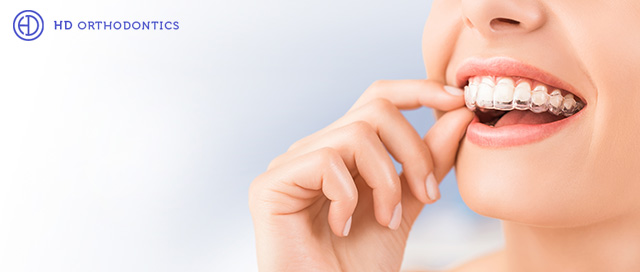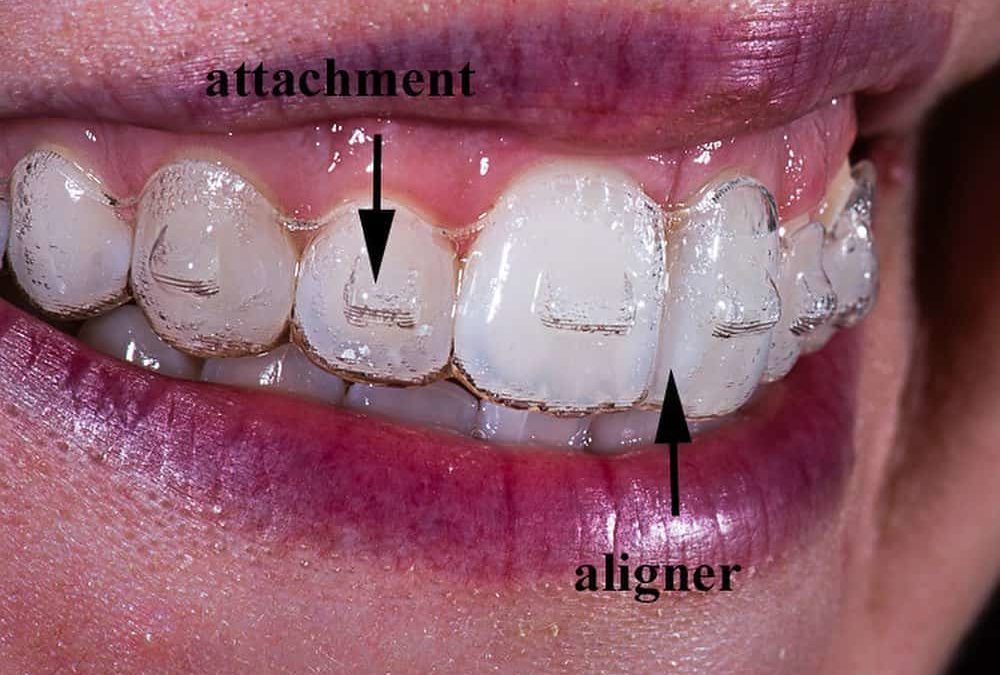Discover the Conveniences of Invisalign for a Perfect Smile Transformation
Discover the Conveniences of Invisalign for a Perfect Smile Transformation
Blog Article
Invisalign vs. Typical Braces: Which Option Is Right for You?
When thinking about orthodontic treatment, the choice between Invisalign and typical dental braces presents several important factors that merit careful examination. Invisalign offers a very discreet choice with removable aligners, while traditional dental braces offer a much more noticeable yet effective solution for serious imbalance. Each alternative incorporates unique advantages and drawbacks associated to aesthetics, convenience, treatment duration, and cost. Comprehending these subtleties is vital for making an educated choice that straightens with your individual choices and lifestyle. The inquiry continues to be: which option will finest meet your orthodontic requirements and assumptions?
Introduction of Therapy Choices

On the other hand, conventional dental braces include steel brackets and wires that are bound to the teeth. This approach applies continuous stress gradually to attain positioning. While efficient for complicated orthodontic concerns, traditional braces require normal gos to for modifications and can pose challenges in maintaining oral health because of the problem of cleansing around cables and brackets.
Both choices have their advantages, and the option usually rests on certain oral conditions, lifestyle preferences, and individual conformity. Ultimately, consulting an orthodontic expert is vital for determining one of the most suitable treatment strategy tailored to individual requirements. Recognizing the subtleties of each choice can considerably affect the total success of orthodontic therapy.
Aesthetic Considerations
A significant factor affecting the option between Invisalign and traditional dental braces is the visual allure each treatment provides. Invisalign aligners are crafted from clear plastic, making them basically undetectable when used.
In contrast, conventional dental braces contain steel brackets and wires, which can be much more recognizable. While improvements in orthodontic modern technology have caused the development of smaller braces and colored elastics, standard braces still keep an even more obvious account. For some individuals, the visibility of braces might deter them from looking for essential therapy.
Eventually, the selection in between Invisalign and conventional braces may rest on personal choices concerning looks. People who focus on discernment usually favor Invisalign, while those who are much less concerned regarding visibility may choose for standard dental braces. Comprehending the aesthetic effects of each choice is essential for making a notified choice that straightens with one's way of life and preferences.
Convenience and Convenience

In terms of ease, Invisalign aligners are removable, making it possible for clients to appreciate their favorite foods without limitation and maintain optimum oral health. Cleaning and flossing are simplified, as the aligners can Full Report be taken out during these routines, whereas conventional dental braces require cautious steering around cables and braces.
In contrast, conventional dental braces require normal adjustments, making them less practical for those with hectic timetables. On the whole, the convenience and ease of Invisalign make it an enticing choice for several individuals looking for orthodontic therapy.
Therapy Duration and Performance
While both Invisalign and traditional dental braces work in correcting oral misalignments, the duration of treatment can differ significantly between both choices. Usually, Invisalign treatment can take anywhere from 12 to 18 months, depending upon the intricacy of the situation. The clear aligners function by slowly changing teeth right into their wanted positions, and routine follow-ups with an orthodontist assistance make sure progression continues to be on course.
On the other hand, typical braces typically call for a longer dedication, normally ranging from 18 months to three years. This is due to their set nature and making use of cords and braces, which can be more reliable for complex cases and serious misalignments (Invisalign). The therapy efficiency of conventional braces is well-documented, as they enable exact modifications and higher control over tooth motion
Inevitably, the selection between Invisalign and conventional braces may pivot on both the expected treatment period and the specific dental concerns at hand. Consulting with an orthodontist is important, as they can give customized suggestions based upon specific requirements, guaranteeing the selected method aligns with wanted outcomes and timeframes.
Price Contrast and Insurance Coverage Choices
Price plays a considerable function in the decision-making process for people considering orthodontic therapy, whether going with Invisalign or traditional braces. Typically, the cost of Invisalign varieties from $3,000 to $8,000, while traditional dental braces commonly cost between $2,000 and $6,000. Aspects affecting you could try here these expenses include the complexity of the case, the duration of treatment, and geographical area.
Insurance coverage can substantially affect out-of-pocket expenditures. Lots of dental insurance coverage plans provide partial protection for orthodontic treatments, however the specifics can differ widely. It is critical for patients to evaluate their insurance plan to establish the level of coverage for either option. Typically, typical braces may be extra regularly covered by insurance policy plans contrasted to Invisalign, which some insurance firms categorize as a cosmetic treatment.
Additionally, numerous orthodontic techniques provide flexible settlement plans, making both treatment alternatives more obtainable. Patients should ask about potential my explanation funding alternatives and discount rates for upfront payments. Examining the complete expense, including insurance advantages and layaway plan, is essential for making an educated choice that lines up with both visual choices and budget plan factors to consider.

Conclusion
In recap, the choice in between Invisalign and typical braces depends upon several aspects, including visual choices, convenience, treatment duration, and price. Invisalign supplies a very discreet, detachable choice that assists in oral health and dietary adaptability, while typical braces might be much more suitable for intricate dental issues and commonly come at a lower cost point. Eventually, appointment with an orthodontist is vital to assess individual conditions and establish one of the most ideal treatment choice for accomplishing optimum oral positioning.
When considering orthodontic treatment, the choice between Invisalign and standard dental braces offers several essential aspects that merit careful examination.Contrasting Invisalign and conventional dental braces exposes distinct therapy alternatives for orthodontic correction.While both Invisalign and traditional dental braces are efficient in remedying oral imbalances, the duration of treatment can vary significantly between the 2 options.Cost plays a considerable duty in the decision-making procedure for individuals thinking about orthodontic treatment, whether opting for Invisalign or typical dental braces.In summary, the option in between Invisalign and traditional dental braces hinges on several factors, consisting of visual preferences, convenience, treatment period, and cost.
Report this page